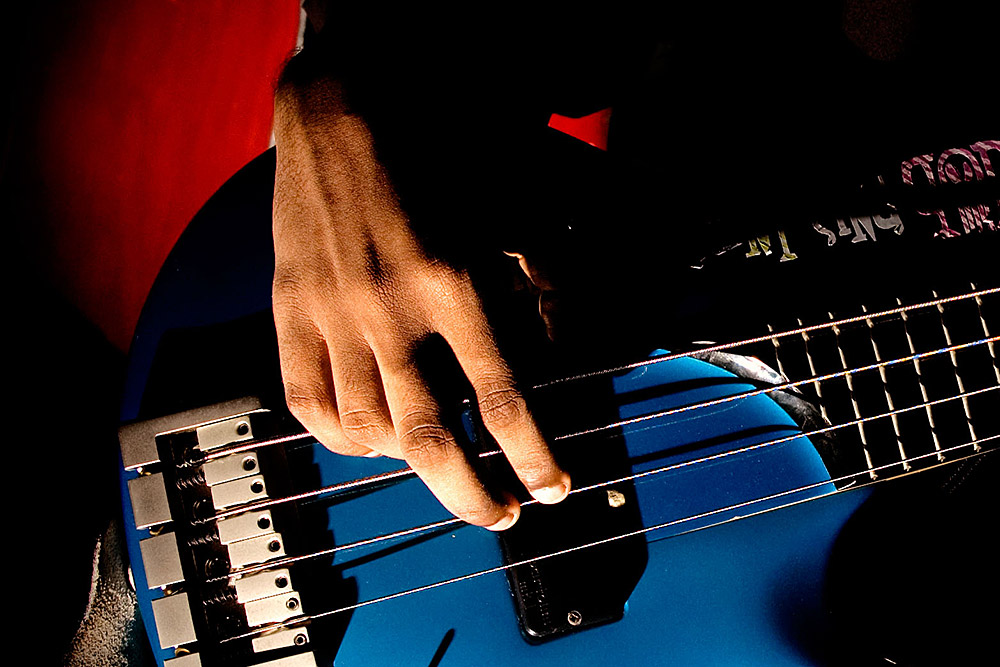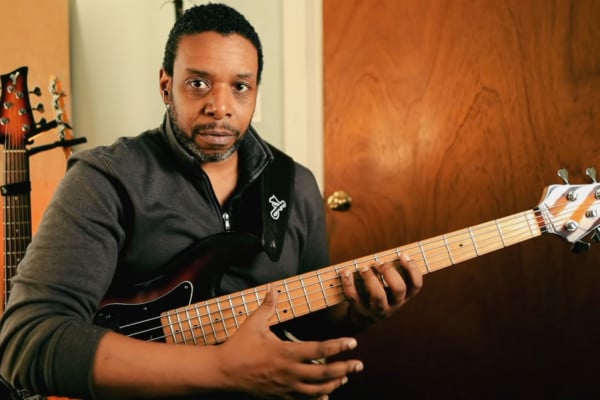Breaking Right Hand Habits

Q: I have a weird technique problem. I guess at some point (to feel the groove better? keep the time? mimic the metronome?) I started landing my fingers on strings to kind of mute them between the played notes and now it began bothering me – all the clicks sound even louder on steel strings (which I prefer). The more I focus on not doing it the more mistakes I make, but when I just relax and have fun playing – the clicks come back. Any tips on how to beat the habit?
A: I went through the very same thing. I am definitely one to subdivide rhythms with my right hand while playing, and while I’ve fostered the rhythmic right hand stuff for certain situations, I’ve had to learn how not to do it in other situations.
I was first made aware of my habit during a recording session. We were listening to a take and the engineer grimaced and then started soloing tracks, looking for the noise. He found it and it was all me. Once he soloed the bass track and we all heard my clips and pops in between notes, he just looked at me and said, “think we can do another one where you don’t do that. At all?”
I was totally embarrassed and, like you, felt like I wasn’t locking with the groove quite as well anymore. It had become a part of the way that I played and not in a good way.
The second time I was made aware of it was on a last minute sub call for a salsa festival here in Portland. It was a Cuban salsa band and the bassist got hung up at immigration. They had a good book (sheet music) and I was recommended as the best bet in town for sight-reading the book. Everything went wonderfully but mid way through the set, while the singer was talking to the crowd, the conga player leaned over to me and begged me to stop subdividing everything because I was stepping all over the percussionists. Actually, his exact words were, “You’re doing great man, but stop subdividing everything. You’re stepping on everybody’s ***s out here”. Point made.
I was still new to latin music and hadn’t really realized that all of the rhythm section parts fit together like a puzzle. This meant that while I was tapping away on my strings in between beats, I was stepping on the toes of the entire rhythm section and limiting what they could do or just simply cluttering up the whole conversation with idle chatter. For the rest of the set, I put all of my focus into playing exactly what was on the page and forcing myself not to play around with the subdivisions like I wanted to. And the music sounded much more coherent and solid for it, even if I felt less comfortable.
I don’t have any super creative ways of telling you how not to do that, but this list should help:
- When you practice and play, always do so with intention. Try not to let your mind wander, and if you are playing something that would work better without an overly rhythmic approach, simply disallow yourself to do it. You will definitely fall back in to it as you relax, but you just have to keep reminding yourself not to do it. As you get used to controlling that affectation, you’ll feel more and more comfortable with or without it. Eventually, you will be fully conscious of it and choose when and where it adds to the music.
- Try putting that energy somewhere else. Vocalizing (quietly) rhythmic information can save you just as well with regard to feeling things and has the side benefit of not coming out of your amp. You can also move or dance, which very much helps to bring the body, mind and music together.
- Isolate the problem. My general approach in the shed is to isolate a problem and practice doing or not doing a thing in any way I can think of. You built it into your playing via muscle memory, so you have to retrain the muscle and develop new habits. Breaking habits is much harder than building them, so it will take time and concentration but, with a mindful approach, it is 100% doable.
Have a question for Damian Erskine? Send it to [email protected]. Check out Damian’s instructional books, Right Hand Drive and The Improviser’s Path.



